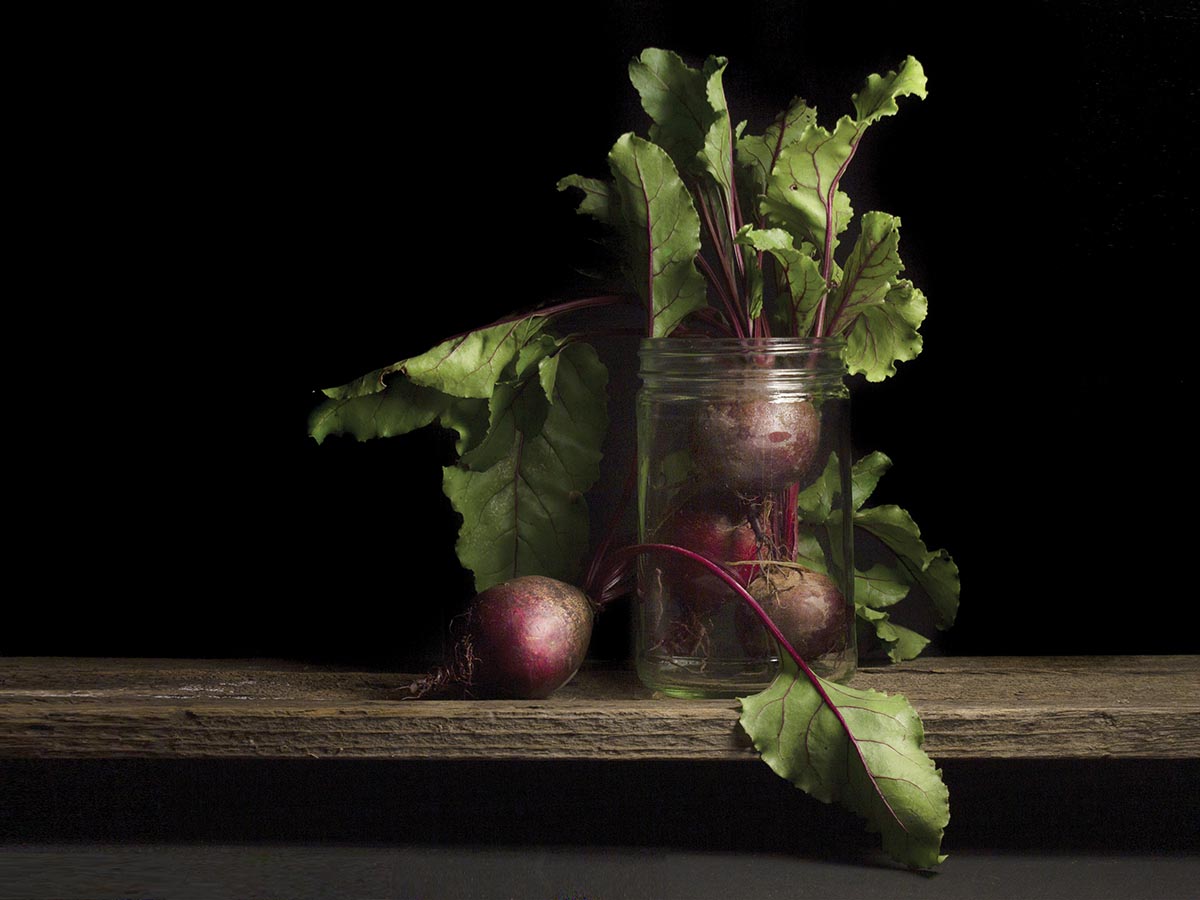
During the early days of the pandemic, Heidi Egerman used the shutdown to teach herself the technique of light painting—a nice way to marry her love of gardening with her love of photography. All the still life subjects in her “Harvest” series were gathered from her own backyard.
The process: Egerman begins by setting up the subject. On her camera, she sets the focus, then turns the focus to manual, sets the camera to a long exposure (often 30 seconds), and turns off the lights so the room is completely dark. She uses a flashlight to “paint” the subject where she’d like for it to be bathed in light.
Equipment: Egerman uses a velvet backdrop, with the subject on a table and the camera on a tripod. Her camera is a Canon EOS Rebel T7i, and she uses either a 60mm, 18-55mm or 24-105mm lens. Her flashlight is a Zanflare with three settings—low, medium, and bright. To diffuse harsh light from the flashlight, she creates a snoot covered with tissue paper, a dryer sheet, or light packing material.
Benefits: With light painting, the light is softened with more texture and saturation, she says. And the image often doesn’t require much post-processing.
Challenges: Egerman recommends shooting tethered to see results on a bigger screen as you create. “It’s not a complicated process, but there is a lot of trial and error,” she says. “But once you get it, it’s really quite magical.”
Amanda Arnold is a senior editor.

 View Gallery
View Gallery

